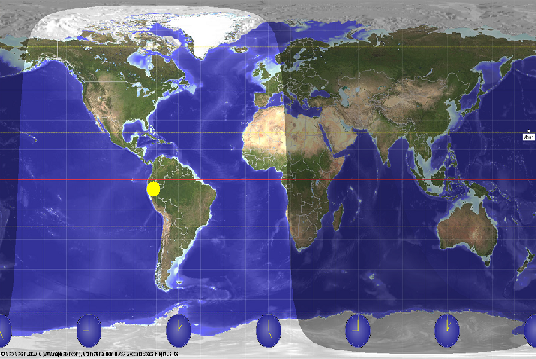Sun getting weaker, Arctic getting colder
We are now in autumn, with the sun south of the equator, the north pole dark, the south pole light, and the days being shorter in the northern hemisphere than the southern hemisphere.
The days are getting shorter here. We’re losing about 2 minutes of daylight every day, going from our maximum of 14 hours, 23 minutes in June to our annual minimum of 9 hours, 55 minutes in December. But, the farther north you go, the more dramatic the changes are. In London, they are losing 4 minutes per day right now (max length of day in summer is 16 hours, 38 minutes, minimum in winter is 7 hours 49 minutes, with the sun rising at 8:00 am and setting around 3:50 pm). In Fairbanks, Alaska, just south of the Arctic circle, they are losing over 6 minutes a day (max length of day in summer is 22 hours, min length of day in winter is 3 hrs 41 mins (sunrise at 11 am, sunset at 240 pm).
The rapidly shortening days to our north, and lower sun angles, are finally allowing the northern regions to cool off, setting up the cold air that will eventually come south to Alabama, in colder and colder pieces over the next couple of months. Greenland and eastern Canada is now in the 30s and 40s, along with northern Europe (i.e., Norway), and northern Russia. Much of Siberia is in the 20s, and stations near the north pole are already near zero.
After the long, hot summer, these days with lows in the 50s and highs in the 70s are nice. It will get even cooler with a reinforcing shot of cool air next week…lows in the 40s maybe as far south as Montgomery, and a few 30s in colder valleys. If only it could stay this way. But, before you know it, we’ll have days with highs in the 40s.
Category: Met 101/Weather History


















